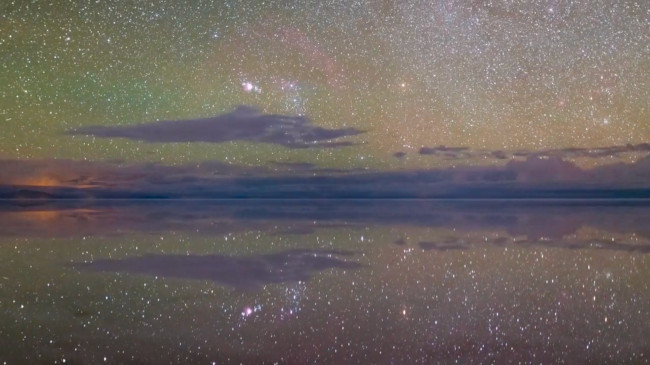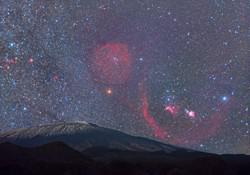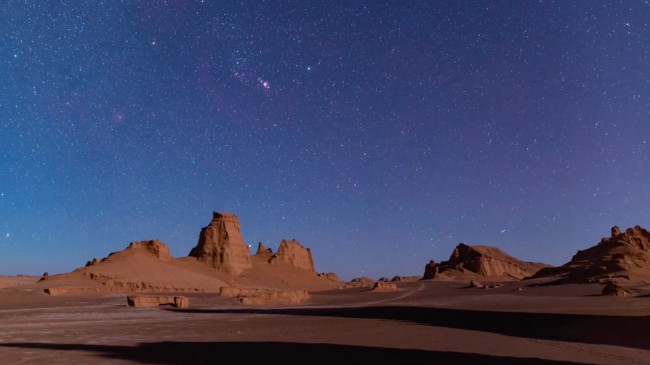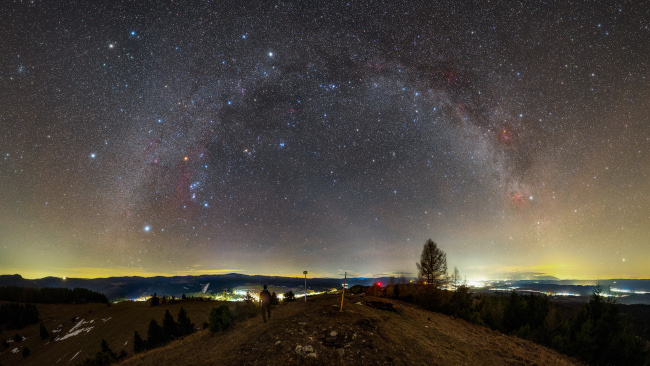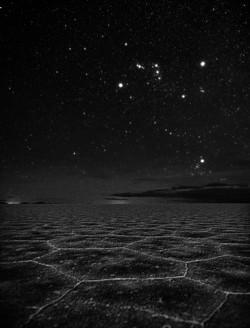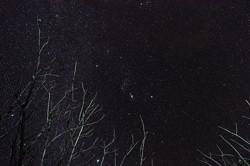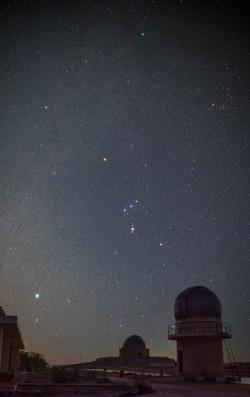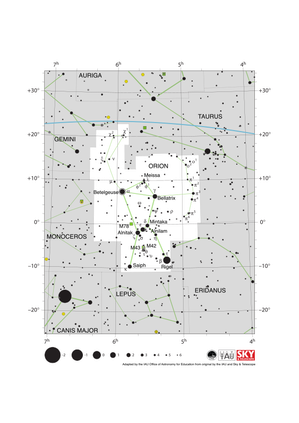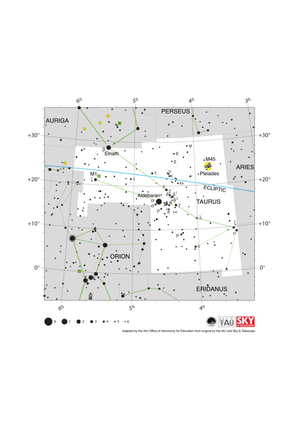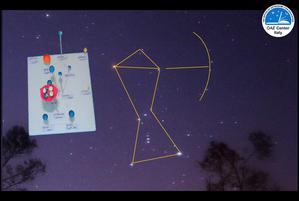Glossary term: Orion
Description: Orion is an easily recognizable constellation near the celestial equator. In the northern hemisphere, it is a prominent winter constellation; in the southern hemisphere, a prominent summer constellation. In Greek myth, Orion was a hunter, and the constellation's main stars are typically interpreted as representing Orion's shoulders, his belt, the sword hanging from his belt, and his two feet. Most of those stars are blue giants or supergiants, that is, particularly bright blueish stars in the later stages of stellar life. The left shoulder star, Betelgeuse, is a red supergiant, that is, a very bright red star in the final stage of its life. Its reddish color can readily be seen in the night sky. Orion's sword contains the Orion nebula. Seen with the naked eye, it is a whitish smudge. Astronomical telescopes have shown it to be a bright red cloud of hydrogen gas where new stars are currently being born.
Related Terms:
See this term in other languages
Term and definition status: This term and its definition have been approved by a research astronomer and a teacher
The OAE Multilingual Glossary is a project of the IAU Office of Astronomy for Education (OAE) in collaboration with the IAU Office of Astronomy Outreach (OAO). The terms and definitions were chosen, written and reviewed by a collective effort from the OAE, the OAE Centers and Nodes, the OAE National Astronomy Education Coordinators (NAECs) and other volunteers. You can find a full list of credits here. All glossary terms and their definitions are released under a Creative Commons CC BY-4.0 license and should be credited to "IAU OAE".
Related Media
Constellations from the World
Credit: Stephanie Ye Ziyi/IAU OAE
License: CC-BY-4.0 Creative Commons Attribution 4.0 International (CC BY 4.0) icons
Chilean Nights
Credit: Robert Barsa/IAU OAE
License: CC-BY-4.0 Creative Commons Attribution 4.0 International (CC BY 4.0) icons
Orion Rises Over Mount Etna
Credit: Dario Giannobile/IAU OAE
License: CC-BY-4.0 Creative Commons Attribution 4.0 International (CC BY 4.0) icons
Winter Constellations
Credit: Amirreza Kamkar/IAU OAE
License: CC-BY-4.0 Creative Commons Attribution 4.0 International (CC BY 4.0) icons
Most Brightest Stars of the Sky
Credit: Giorgia Hofer/IAU OAE
License: CC-BY-4.0 Creative Commons Attribution 4.0 International (CC BY 4.0) icons
Warm Winter Night Over Spiš Region
Credit: Robert Barsa/IAU OAE
License: CC-BY-4.0 Creative Commons Attribution 4.0 International (CC BY 4.0) icons
Luminous Salar de Uyuni
Credit: Stephanie Ye Ziyi/IAU OAE
License: CC-BY-4.0 Creative Commons Attribution 4.0 International (CC BY 4.0) icons
The Hunter in the Forest
Credit: René Antonio Urroz Álvarez/IAU OAE
License: CC-BY-4.0 Creative Commons Attribution 4.0 International (CC BY 4.0) icons
Romanian Orion
Credit: Alex Conu/IAU OAE
License: CC-BY-4.0 Creative Commons Attribution 4.0 International (CC BY 4.0) icons
Watchtower and Paddy Fields Under the Starry Sky
Credit: Likai Lin/IAU OAE
License: CC-BY-4.0 Creative Commons Attribution 4.0 International (CC BY 4.0) icons
Winter Constellations
Credit: Mohamed Aboushelib/IAU OAE
License: CC-BY-4.0 Creative Commons Attribution 4.0 International (CC BY 4.0) icons
The Kingdom of Orion
Credit: Carlos Zudaire/IAU OAE
License: CC-BY-4.0 Creative Commons Attribution 4.0 International (CC BY 4.0) icons
Related Diagrams
Orion Constellation Map
Credit: Adapted by the IAU Office of Astronomy for Education from the original by IAU/Sky & Telescope
License: CC-BY-4.0 Creative Commons Attribution 4.0 International (CC BY 4.0) icons
Taurus Constellation Map
Credit: Adapted by the IAU Office of Astronomy for Education from the original by IAU/Sky & Telescope
License: CC-BY-4.0 Creative Commons Attribution 4.0 International (CC BY 4.0) icons
Related Activities
Orion constellation in 3D
astroEDU educational activity (links to astroEDU website) Description: Let's make a simple model of the Orion constellationLicense: CC-BY-4.0 Creative Commons Attribution 4.0 International (CC BY 4.0) icons
Age Ranges: 8-10 , 10-12 Education Level: Primary Areas of Learning: Guided-discovery learning , Modelling , Social Research Costs: Low Cost Duration: 2 hours Group Size: Group Skills: Analysing and interpreting data , Asking questions , Developing and using models